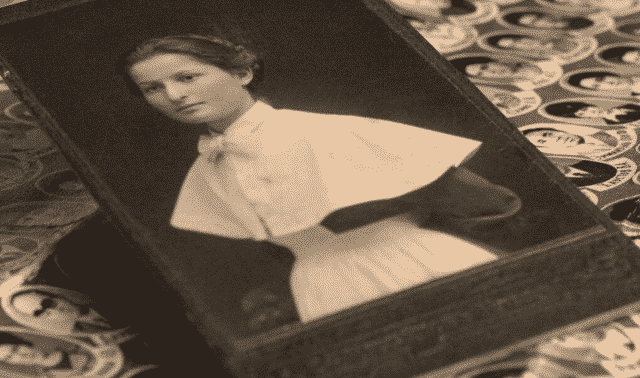
Based on a few factors, I can date this tintype to the 1860s. The style of chair he’s sitting in is often featured in portraits from that period. His jacket, with the braid trim, also dates from the 1860s, as do his tie and the narrow-collared shirt. So could this be William Joseph Taylor? Maybe. Costume clues place an image in a time frame, but identification relies on supporting evidence. In this instance, there are several places to look.
Family documents
Graddy found this tintype with letters, papers and photographs belonging to one of Taylor’s children. Those documents link the tintype to the Taylor family. By sorting through all the photos in the collection, Graddy might discover other images of Taylor or his 10 children.
Occasionally, the contents of a letter will provide an identification. It’s possible that someone mentioned this portrait in one of the written documents. For this reason, it’s worth scanning the contents of the collection for details that will help identify this image and any others.
Identified images
When Graddy wrote to me, I asked to see images of other family members. She hasn’t found genealogical information on Taylor’s father, but knows Taylor had a sister and 10 children. No known photographs of Taylor’s parents or sister exist, but Graddy was able to scan and send me three images of his children. Few of them actually resemble the man in this tintype, but one young man does have his distinctive eyebrows.
Other collections
If Graddy can locate descendants of Taylor’s other children, they might be able to provide identified images of her ancestor. Another option is to ask historical societies in Moore County to look for images of Taylor as a tax collector. The Moore County Heritage Book Committee is seeking photos and information for a new book. It’s worth asking if the committee has located any data on Taylor.
Since Taylor was a Civil War veteran, Graddy also should search the photograph database at the US Army Military History Institute Web site. I searched on the keyword Taylor and found 109 records—no matches, but definitely worth checking back later.
Since Graddy has dozens of unidentified photographs of family members, it’s possible she has other images from the 1860s to illustrate her family’s Civil War generation. To date the images, she should consult Juanita Leisch’s Who Wore What? Women’s Wear 1861-1865 (Thomas Publications, $29.95) and Joan Severa’s Dressed for the Photographer: Ordinary Americans & Fashion, 1840-1900 (Kent State University Press, $60).
Although it appears that this man could be William Joseph Taylor, I’m not certain. If anyone recognizes this man, please contact me at mtaylor@taylorandstrong.com.



